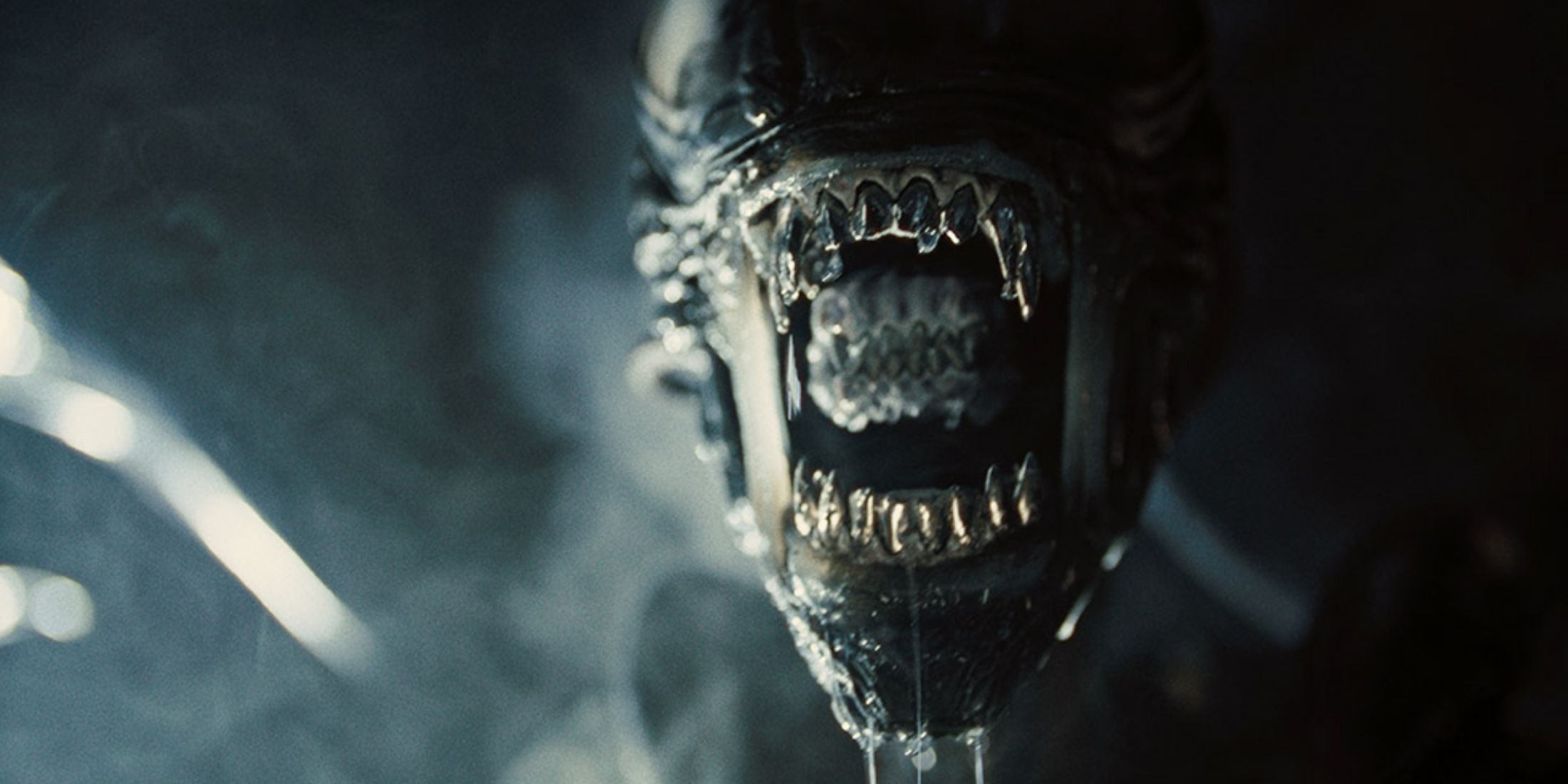Key Takeaways
- Alien: Romulus introduces a human-xenomorph hybrid, posing a challenge for future sequels.
- Over the years, the Alien franchise has focused on evolving the xenomorph species with new hybrids.
- The upcoming Alien: Romulus sequel faces the hurdle of creating something scarier than the offspring.
Alien: Romulus was widely considered a hit in the Alien franchise, featuring a return to the claustrophobic environment and new twists on classic creatures. But it may have also done something that could hamstring any future sequels.
The Alien franchise has become iconic over the years, particularly for its introduction of one of cinema’s scariest monsters, the Xenomorph. The fictional extraterrestrial is an endoparasitoid which is considered by many within the Alien movies, particularly the Weyland-Yutani corporation, to be a “perfect specimen.” The creature goes through multiple stages of life, starting as an egg, before hatching and releasing a parasite known as a facehugger, which implants alien embryos into a host body. The embryo will then grow inside the host before forcibly breaking out and emerging in its new chestburster form. From there it will rapidly grow into a full-sized Xenomorph. The Xenomorph’s unsettling design, with its acid blood and ability to survive basically anything, has made it one of the scariest monsters in media, but perhaps they’re not scary enough for Alien movies anymore.

Related
Alien: Romulus Has An Obvious Prequel
Alien: Romulus has one plot thread that could be ripe for the prequel treatment.
Alien’s Hybrid History
Following the release of Alien and Aliens, other installments in the franchise went about looking for different ways to iterate on the xenomorph character. Aliens introduced the Alien Queen, Alien 3 gave audiences the xenomorph-dog hybrid, and Alien: Resurrection created a horrifying creature combined with Ripley’s and the Alien Queen’s DNA. Prometheus continued iterating on the trend, introducing different species in the xenomorph family, including the Deacon, which Alien: Covenant then continued, adding the Neomorph to the list of Alien variants.
Alien as a franchise has always been fascinated with evolution and biology. After the initial couple of films, the franchise moved further away from its core premise of being a claustrophobic monster movie in space, and began introducing more complex lore and mythology around the xenomorph species. In many ways, Alien: Romulus was a blend of both the old and new halves of the franchise. It returned to many of the ideas that made Alien great, finding new ways to iterate on existing creatures, like a swarm of facehuggers, or an zero gravity xenomorph fight. Alien: Romulus capitalized on the inherent unsettling and graphic nature of H.R. Giger’s design, pairing it with practical sets to great effect. But that didn’t stop the movie from also trying its hand at its own alien evolution.
Alien: Romulus Introduces The Offspring
|
Alien: Romulus |
|
|
Director |
Fede Àlvarez |
|
Cast |
Cailee Spaeny, David Jonsson, Isabela Merced, Archie Renaux, Aileen Wu |
|
Runtime |
1 hour 59 minutes |
|
Genre |
Horror, Sci-Fi |
Alien: Romulus has all the staples of an alien film: face-huggers, chestbursters, and plenty of xenomorphs. It also explores what a human-xenomorph hybrid may look like. In Alien: Romulus, Kay (Isabela Merced) is revealed to be pregnant, and in her attempt to survive her wounds after the xenomorph’s attack, she injects herself with an experimental serum that is derived from both the xenomorph and human genome. It was a serum the Renaissance space station had been working on in secret and was designed to enhance the human genome so the Weyland-Yutani company could augment its employees to work in hostile environments.
However, what the serum ends up doing is rapidly accelerating the growth of the fetus inside Kay, resulting in her birthing an unnatural human-alien hybrid, known in Alien: Romulus as “the offspring.” The offspring is a terrifying creation, blending the scariest parts of both the human and xenomorph bodies, with a look that is also a bit reminiscent of Prometheus’ Engineers. As is the best way to deal with these things, Rain (Cailee Spaeny) and Andy (David Jonsson) manage to eject the offspring out of the airlock, which means it’s probably still alive out there somewhere.
Alien Romulus Has a Monster Problem
Is the Xenomorph Not Scary Enough Anymore?
The offspring is perhaps second only to the Ripley-xenomorph hybrid in Alien: Resurrection, which also fused human and alien DNA into a freak creation. It’s an idea that’s now been explored twice in the franchise, which begs the question, where do the movies go after Alien: Romulus? There have been many different combinations of the xenomorph’s DNA with other creatures, in hopes it will create something scarier than the last. But what can the upcoming Alien: Romulus sequel do that could top the horror of the offspring? And does the Alien franchise’s reliance on new hybrids mean it’s running out of ideas?
The original xenomorph was so iconic it’s become one of horror’s greatest monsters, but rarely has one of its hybrid creations outshone the original alien. Perhaps what future Alien movies need to look at is finding new ways to utilize the existing xenomorph. Alien: Romulus proved it could be done, with many of the scares in the first two-thirds of the movie relying on existing xenomorph life stages. Whether it can be done again, however, remains to be seen. Fede Àlvarez no doubt has plenty of ideas for his Alien: Romulus sequel, but there’s no telling whether the base xenomorph will satisfy his plans, or whether it will be enough for the audiences watching.


More
Alien: Romulus’ Premise Could Be a Match Made in Heaven for Alien: Isolation 2
While Alien: Isolation 2 can borrow its predecessor’s formula for potential success, taking and using Alien: Romulus’ premise could help secure it.












Leave a Reply